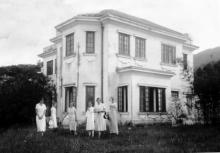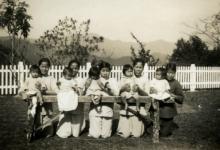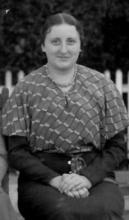This is a Grade 2 historic building, which was built in 1906 and is still in use.
The Historic Building Appraisal states that it was "constructed for the accommodation of the managerial staff engaged on the construction of the Kowloon-Canton Railway. The house and the adjacent guest bungalow and servants' quarters sit in 6 acres of grounds close to the railway and some 167 steps lead up to the site from the old railway station of Tai Po Kau. After the completion of the Railway work, the house was no longer required for that original purpose and it was taken over by the Government to become quarters for civil servants. At first the house was named White Cottage. It was renamed as White House sometime around 1935."
Its various uses in the intervening years are described in the Appraisal. Since 1999, it has been used as a family retreat centre (managed by the Hong Kong Family Welfare Society) and called the 'Zonta White House'.
(the full Appraisal is here: http://www.aab.gov.hk/historicbuilding/en/N143_Appraisal_En.pdf)



Comments
BCMS Foundling Home at The White House
Prior to 1935 the White House had been known as the White Cottage. The White House and Island House were the two houses which caught the eye of visitors approaching from Ma Liu Shui.
In 1933, the landlord put the rent up in the BCMS Foundling Home at Broadwood Road, which put it beyond the reach of the BCMS. Miss Lucas and the team viewed the White House at Taipo, and the decision was made to move the Home there. After the move Miss Lucas announced her decision to retire, which left Mildred Dibden in charge of the Home, only 18 months after arriving in HK.
In common with other missionary houses in Hong Kong, the White House would often be the recipient of abandoned babies at the front gates, but it was not the policy of the BCMS to take these in. This deeply concerned Mildred and many were the conversations she had with her colleagues and indeed anyone else who might be able to influence a change in policy. But to no avail.
Taipo in the 1930s was subject to malaria, which claimed many victims in those days, and it was from a mosquito bite that Mildred fell ill with malignant tertian malaria, one of four types of the disease, and considered the most deadly. She was first hospitalised and then told she must return to the UK, and because she had come so close to death, never return to Hong Kong.
Completely devastated, Mildred boarded ship for Britain and headed home. She didn't know it but in 18 months she would be back in Hong Kong.
In her absence, a senior missionary was sent from Nanning, Guangxi Province, to take over the running of the White House. It all must have seemed very final.
Source: The Yip Family of Amah Rock by Jill Doggett.
The White House in the war period
The White House was taken over by the Kempeitai for the duration of the war, and used as a prison and brutal interrogation centre. As part of their control of the area the Japanese would pick out villagers and execute them in the grounds.
After the War the White House was renovated and became Government staff quarters for civil servants and their families. Then it was used by an NGO providing social services to the community. Since 1999 it has been known as Zonta White House as described in the earlier post.
Source: Same as link given above except it doesn't seem to be working now.
BCMS Children's Home location in 1941
I had assumed that the BCMS Home was still in The White House, Taipo at the start of the War in 1941, but in her war diary Mildred Dibden says that she had a phone call at 6am on the morning of December 8th from Iris Critchell of the BCMS Children's Home, 'which is situated about five minutes' walk from us along the San T'an Kok road.' With Mildred in Main Street, Fanling, would this imply the Children's Home was also in Fanling? Or was this another BCMS home?
San T'an Kok Road
I wonder if this is a mispelling of Sha Tau Kok Road? However, I have no idea when this road was named as such.
BCMS Home move (again)
It must be Sha Tau Kok Road Phil. It does look like a mis-spelling. Thank you for that.
Just to say I have stumbled across the answer to my question above in the paper The First 25 Years of the BCMS by Hooton and Wright. Answer: No the BCMS home was not still in Taipo in 1941. It was back in Kowloon. This is the text:
'A special word must be said about the Children's Home. In 1934 it was at Tai-Po, near Hong-Kong, under Miss Dibden, Miss Lomas*, Miss Loudwell, and Miss James*. Some of the older girls could be sent out as teachers and nurses to other stations (in China).
'During 1937 the home was moved to Kowloon, a healthier district of Hong Kong. Miss I. Critchell went out to work there in 1937, and Miss S. Birchall in 1938. In the next period we shall find the former in charge at the time when the Japanese occupied Hong Kong.'
As regards Mildred Dibden's note that Iris Critchell was 5 minutes down the road, the Yip Family account reads, ' Iris Critchell, of the BCMS Home near the Fanling Babies' Home, telephoned...'. That does seem to verify things.
Grace James later married a missionary and returned to a parish in the UK.
* Pictures below.